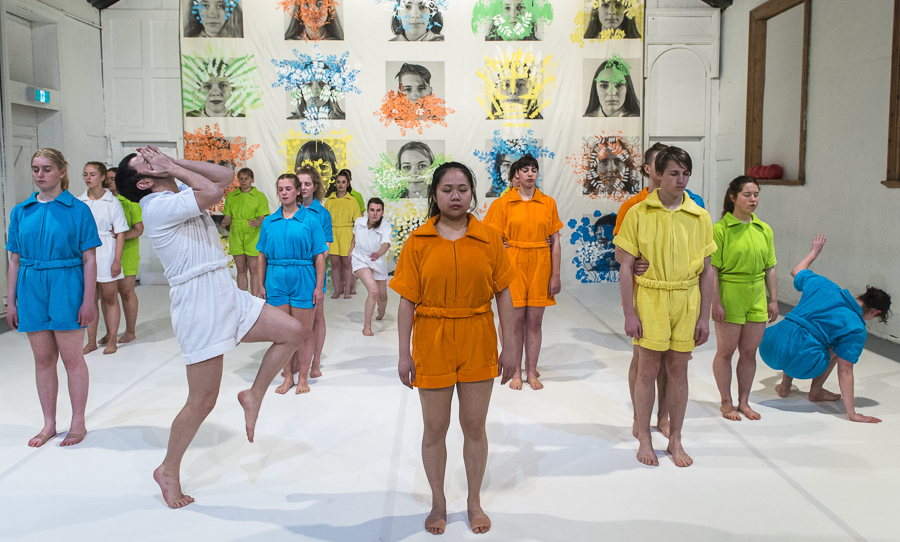Temperance Hall, South Melbourne.
26 September 2018.
There is something romantic and bittersweet about this short, 30-minute work, and it’s not just the kids. Indeed, it’s easy to be swept up in the sheer tenacity and youthful energy of the 20 young dancers (from specialist pre-professional outfit Yellow Wheel), but beyond la beauté des jeunes, there is an almost naïve, Gauguin-like vivacity to Paradise. Colourful, ceremonial and just a teensy bit savage, it evokes a nostalgia for lost idylls and recalls the tremors and delights of first-time discovery.
The church hall setting and white floor staging creates a sense of puritan, communal gathering, as though these avowedly contemporary moves were part of a folk dance celebration, a coming-of-age ritual for the island’s youth. Over the arc, we see them transformed from a collection of sometimes contesting multi-coloured clans into a synchronised, uniformed and more graceful society. Whether this is the death of innocence or the flowering of nascent adulthood is left to us to decide. Or, deeper still, we are left to wonder if this is the inevitable pulping of formerly isolated tribal traditions into the homogenised mush of global culture? Perhaps, for all the bright colour and humour, for all the downy limbed vigour, what we are seeing is a sunlit paradise being lost.

Phillip Adams’ ‘Paradise’. Photo by Gregory Lorenzutti.
Conceived and choreographed by one of Australia’s most singular dance creatives, Phillip Adams, Paradise is lithe, graceful and, at times, quite technical. It utilises motifs from both contemporary and classical and eschews the virtuosic in favour of sensuality and group cohesion. There are as many moments of geometric modernism as there are rough and tumble physicality. Yet for all that, the work has the straightforward, unfussy appeal of a summer school showcase.
This undeniable brightness is augmented by the visual art inputs of both Gregory Lorenzutti and Mikala Dwyer, and its dreamy sweetness is underscored by the lush, string driven music of Richard Strauss. All of which helps to make Paradise feel like you’re in an MGM Technicolor epic from the 1950s, or like it’s a Saturday afternoon in the summer of ‘76 and you’re watching Elvis movies on a brown couch with your friends from primary school.
Then of course, there’s the ensemble — 20 dancers aged 15-24. It’s their passion, their skill, their obvious delight in performance that brings the final smile. Sure, it’s a little bit like “well done, kids”, but it’s also apparent that these are seriously aspiring young artists with obvious ability. For all of the undoubted cleverness of Adams et al, it’s the ensemble that embodies the inner vision of Paradise with delightful charm and skill and, in turn, keeps us watching.
By Paul Ransom of Dance Informa.

















